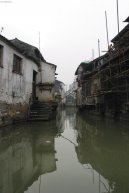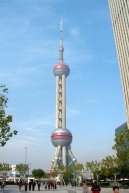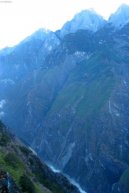| Introduction - China: |
| Location - China: |
| People - China: |
| Government - China: |
| Economy - China: |
Economy overview | Chinas economy during the last quarter century has changed from a centrally planned system that was largely closed to international trade to a more market-oriented economy that has a rapidly growing private sector and is a major player in the global economy. Reforms started in the late 1970s with the phasing out of collectivized agriculture, and expanded to include the gradual liberalization of prices, fiscal decentralization, increased autonomy for state enterprises, the foundation of a diversified banking system, the development of stock markets, the rapid growth of the non-state sector, and the opening to foreign trade and investment. China has generally implemented reforms in a gradualist or piecemeal fashion, including the sale of equity in Chinas largest state banks to foreign investors and refinements in foreign exchange and bond markets in 2005. The restructuring of the economy and resulting efficiency gains have contributed to a more than tenfold increase in GDP since 1978. Measured on a purchasing power parity (PPP) basis, China in 2006 stood as the second-largest economy in the world after the US, although in per capita terms the country is still lower middle-income and 130 million Chinese fall below international poverty lines. Economic development has generally been more rapid in coastal provinces than in the interior, and there are large disparities in per capita income between regions. The government has struggled to: (a) sustain adequate job growth for tens of millions of workers laid off from state-owned enterprises, migrants, and new entrants to the work force; (b) reduce corruption and other economic crimes; and (c) contain environmental damage and social strife related to the economys rapid transformation. From 100 million to 150 million surplus rural workers are adrift between the villages and the cities, many subsisting through part-time, low-paying jobs. One demographic consequence of the one child policy is that China is now one of the most rapidly aging countries in the world. Another long-term threat to growth is the deterioration in the environment - notably air pollution, soil erosion, and the steady fall of the water table, especially in the north. China continues to lose arable land because of erosion and economic development. China has benefited from a huge expansion in computer Internet use, with more than 100 million users at the end of 2005. Foreign investment remains a strong element in Chinas remarkable expansion in world trade and has been an important factor in the growth of urban jobs. In July 2005, China revalued its currency by 2.1% against the US dollar and moved to an exchange rate system that references a basket of currencies. In 2006 China had the largest current account surplus in the world - nearly $180 billion. More power generating capacity came on line in 2006 as large scale investments were completed. Thirteen years in construction at a cost of $24 billion, the immense Three Gorges Dam across the Yangtze River was essentially completed in 2006 and will revolutionize electrification and flood control in the area. The 11th Five-Year Program (2006-10), approved by the National Peoples Congress in March 2006, calls for a 20% reduction in energy consumption per unit of GDP by 2010 and an estimated 45% increase in GDP by 2010. The plan states that conserving resources and protecting the environment are basic goals, but it lacks details on the policies and reforms necessary to achieve these goals. |
|
Gdp purchasing power parity | $10.17 trillion (2006 est.) |
|
Gdp official exchange rate | $2.518 trillion (2006 est.) |
|
Gdp real growth rate | 10.7% (official data) (2006 est.) |
|
Gdp per capita ppp | $7,700 (2006 est.) |
|
Gdp composition by sector | agriculture: 11.9%
industry: 48.1%
services: 40%
note: industry includes construction (2006 est.) |
|
Labor force | 798 million (2006 est.) |
|
Labor force by occupation | agriculture: 45%
industry: 24%
services: 31% (2005 est.) |
|
Unemployment rate | 4.2% official registered unemployment in urban areas in 2005; substantial unemployment and underemployment in rural areas (2005) |
|
Population below poverty line | 10% (2004 est.) |
|
Household income or consumption by percentage share | lowest 10%: 1.8%
highest 10%: 33.1% (2001) |
|
Distribution of family income gini index | 44 (2002) |
|
Inflation rate consumer prices | 1.5% (2006 est.) |
|
Investment gross fixed | 44.3% of GDP (2006 est.) |
|
Budget | revenues: $446.6 billion
expenditures: $489.6 billion; including capital expenditures of $NA (2006 est.) |
|
Public debt | 22.1% of GDP (2006 est.) |
|
Agriculture products | rice, wheat, potatoes, corn, peanuts, tea, millet, barley, apples, cotton, oilseed; pork; fish |
|
Industries | mining and ore processing, iron, steel, aluminum, and other metals, coal; machine building; armaments; textiles and apparel; petroleum; cement; chemicals; fertilizers; consumer products, including footwear, toys, and electronics; food processing; transportation equipment, including automobiles, rail cars and locomotives, ships, and aircraft; telecommunications equipment, commercial space launch vehicles, satellites |
|
Industrial production growth rate | 22.9% (2006 est.) |
|
Electricity production | 2.5 trillion kWh (2005) |
|
Electricity consumption | 2.494 trillion kWh (2005) |
|
Electricity exports | 11.2 billion kWh (2005) |
|
Electricity imports | 5 billion kWh (2005) |
|
Oil production | 3.631 million bbl/day (2005) |
|
Oil consumption | 6.534 million bbl/day (2005) |
|
Oil exports | 443,300 bbl/day (2005) |
|
Oil imports | 3.181 million bbl/day (2005) |
|
Oil proved reserves | 16.1 billion bbl (2006 est.) |
|
Natural gas production | 52.88 billion cu m (2005) |
|
Natural gas consumption | 47.91 billion cu m (2005 est.) |
|
Natural gas exports | 2.79 billion cu m (2005) |
|
Natural gas imports | 0 cu m (2005) |
|
Natural gas proved reserves | 2.35 trillion cu m (2005 est.) |
|
Current account balance | $179.1 billion (2006 est.) |
|
Exports | $974 billion f.o.b. (2006 est.) |
|
Exports commodities | machinery and equipment, plastics, optical and medical equipment, iron and steel |
|
Exports partners | US 21%, Hong Kong 16%, Japan 9.5%, South Korea 4.6%, Germany 4.2% (2006) |
|
Imports | $777.9 billion f.o.b. (2006 est.) |
|
Imports commodities | machinery and equipment, oil and mineral fuels, plastics, optical and medical equipment, organic chemicals, iron and steel |
|
Imports partners | Japan 14.6%, South Korea 11.3%, Taiwan 10.9%, US 7.5%, Germany 4.8% (2006) |
|
Reserves of foreign exchange and gold | $1.034 trillion (2006 est.) |
|
Debt external | $305.6 billion (2006 est.) |
|
Economic aid recipient | $NA |
|
Currency code | yuan (CNY); note - also referred to as the Renminbi (RMB) |
|
Exchange rates | yuan per US dollar - 7.97 (2006), 8.1943 (2005), 8.2768 (2004), 8.277 (2003), 8.277 (2002) |
|
| Communications - China: |
| Transportation - China: |
| Military - China: |
This page was last updated on 16 September, 2007



